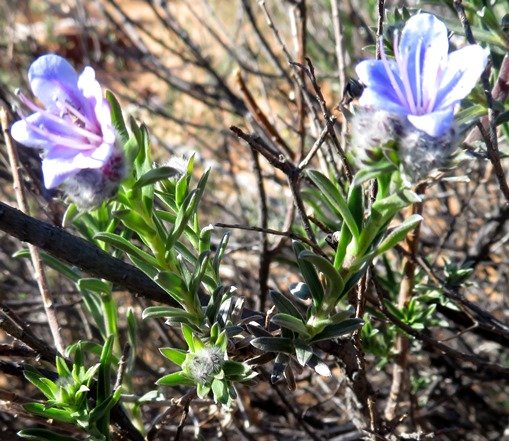Lobostemon

Author: Ivan Lätti
Photographer: Thabo Maphisa
Lobostemon is a genus of well-flowering shrubs and subshrubs in the Boraginaceae, borage or forget-me-not family. The plants are often hairy, sometimes coarsely so, while rarely nearly glabrous, i.e. hairless.
The simple leaves are alternate, sessile and variously shaped, their margins entire.
The inflorescences are terminal or grown from leaf axils in cyme-like clusters, sometimes spike-like, usually with conspicuous bracts. The calyx comprises five sepals, sometimes dissimilar and usually divided fully or nearly to the base.
The funnel-shaped, cylindrical or bell-shaped corolla is often blue or pink, rarely white or red, while some species age to pink. The red-flowering species tend to be bird-pollinated, the others by insects. The five corolla lobes spread or are erect, often unequal when two of them are larger.
The corolla is naked in the throat but usually with staminal scales, ridges or protuberances present at the bases of the filaments. The generic name, Lobostemon is derived from the Greek words lobos meaning the lobe of the ear and stemon meaning thread and these days also stamen, referring to the variously shaped staminal scales occurring on many of the filaments of Lobostemon flowers. The stamens are exserted in some species, their filaments equal in length in some species only. The superior ovary is four-lobed, its style simple and the stigma minutely two-lobed.
The fruit consists of four ovoid or three-angled nutlets, their surfaces varying in smoothness to quite wrinkled. The inflorescence elongates during the fruiting stage.
There are 30 Lobostemon species, all South African, occurring in the Northern and Western Cape, also slightly into the west of the Eastern Cape. All species grow in the winter rainfall area in fynbos.
A decoction of plant parts used to be popular in traditional medicine, in the treating of wounds, burns, ringworm and more ailments. Liver damage is sometimes associated with alkaloids found in some of the species, so care should be taken. Young parts of most species are usually browsed.
The plant in picture is Lobostemon trichotomus (Leistner, (Ed.), 2000; Andrew, 2017; Vlok and Schutte-Vlok, 2015; Manning, 2007; Wikipedia; www.phillipskop.co.za).

